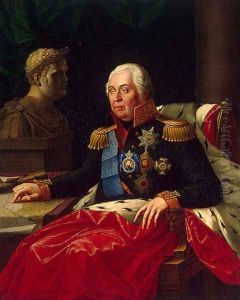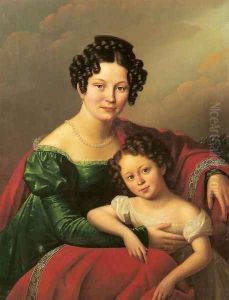Jozef (Joseph) Oleszkiewicz Paintings
Jozef Oleszkiewicz, also known as Joseph Oleszkiewicz, was a Polish artist born in 1777 in the region that is now Belarus. He was a notable figure in the world of European art during the late 18th and early 19th centuries. Oleszkiewicz was primarily known for his work as a portrait painter, though he also engaged in historical painting.
Oleszkiewicz's artistic journey began in his homeland, where he first took to studying art before moving to more prominent European art centers to further his education and career. He studied under renowned artists and was influenced by the prevailing artistic trends of his time, including Neoclassicism, which was characterized by a return to the simplicity and elegance of ancient Greek and Roman arts.
Despite the challenges of the Napoleonic Wars and the political upheavals that affected Europe during his lifetime, Oleszkiewicz managed to gain a reputation for his artistic talent. His portraits were especially appreciated for their sensitivity and the skill with which he captured his subjects' personalities and status.
Jozef Oleszkiewicz's career was a reflection of the shifting cultural landscapes of Europe as the continent transitioned from the Enlightenment into the Romantic era. His works provide a valuable insight into the aesthetics and societal norms of the time. He passed away in 1830, leaving behind a body of work that, while not as widely known today as some of his contemporaries, remains significant for its historical and artistic value.


